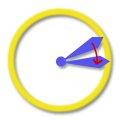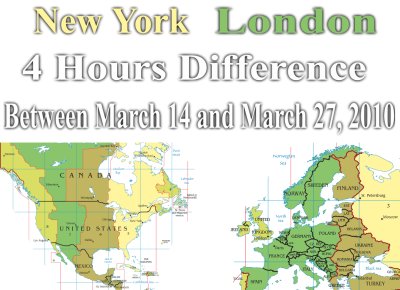Daylight-Savings-Time Starts in Europe Tonight

It’s time to adjust the clocks in Europe again.
Tonight (or tomorrow morning if you will) clocks will be advanced from 2 a.m. to 3 a.m. when daylight-saving-time begins in Europe this spring.
That means we (including me) lose one hour that we don’t get back until next fall when daylight-savings-time in Europe will end on Sunday, October 31, 2010. (Of course we will get it back without interest being paid. Maybe we’ll save a bit on the electric bill, but I’m not really sure about that.)
Attention to you folks in the USA and Canada: The time difference to Europe will get back to normal again.
Here are some examples to demonstrate the ‘usual time differences’ between USA, Canada and Europe.
| America | Europe | Time Difference [hours] |
|---|---|---|
| New York | London | 5 |
| Berlin | 6 | |
| Chicago | London | 6 |
| Berlin | 7 | |
| Denver | London | 7 |
| Berlin | 8 | |
| Los Angeles | London | 8 |
| Berlin | 9 | |
| Example: 10 a.m. in Denver is 6 p.m. in Berlin | ||
You’ll find additional information and tools at timeanddate.com (↑).
- Daylight Saving Time–first half of 2010 (↑)
- Daylight Saving Time–second half of 2010 (↑)
- Overview over start and end times for 2010 (↑)
Browsing tip: Links designated with (↑) will open in a new browser window.
I think the next transition is on April 4th, when daylight-saving-time ends this year in Australia.
Kind of confusing, isn’t it.
Have a ‘short’ night sleep
(if you are in Europe.)
Yours
John W. Furst


